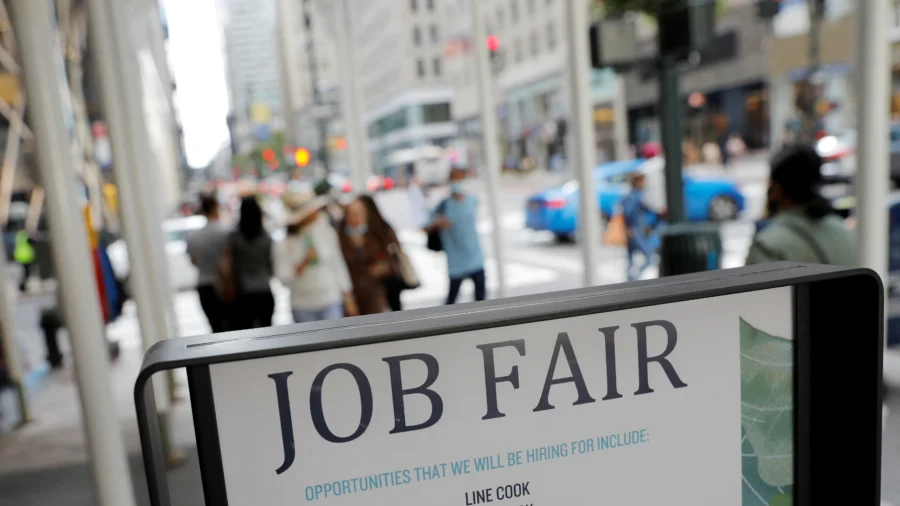WASHINGTON—The number of Americans filing new applications for jobless benefits declined last week as layoffs remained low, which could help to allay fears that the labor market was deteriorating.
The weekly jobless claims report from the Labor Department on Thursday, the most timely data on the economy’s health, also showed unemployment rolls shrinking to levels last seen in mid-June. It reduces the need for the Federal Reserve to deliver a 50 basis points interest rate cut this month.
Most economists expect the U.S. central bank to kick off its easing cycle with a quarter-point rate reduction as domestic demand remains solid. A step-down in hiring, which pushed the unemployment rate to a near three-year high of 4.3 percent in July rattled investors and fanned concerns that a recession was stalking the economy.
“The jobless claims data remain consistent with a gradual increase in unemployment, rather than the sharp jump reported for July,” said Ian Shepherdson, chief economist at Pantheon Macroeconomics. Initial claims for state unemployment benefits dropped 5,000 to a seasonally adjusted 227,000 for the week ended Aug. 31, the lowest level since early July. Economists polled by Reuters had forecast 230,000 claims for the latest week.
Claims had been bouncing around the 230,000 level since pulling back from an 11-month high in late July as seasonal distortions from the automobile industry and Hurricane Beryl faded. Unadjusted claims fell 3,352 to 189,389 last week, with a sizeable increase in Massachusetts more than offset by declines in Texas, New York, and elsewhere.
The data echoed the findings in the Federal Reserve’s “Beige Book” report on Wednesday, which described employment levels as “generally flat to up slightly in recent weeks.”
It noted that “a few (Fed) districts reported that firms reduced shifts and hours, left advertised positions unfilled, or reduced headcounts through attrition, though accounts of layoffs remained rare.” It added, however, that “candidates faced increasing difficulties and longer times to secure a job.”
The number of people receiving benefits after an initial week of aid, a proxy for hiring, decreased 22,000 to a seasonally adjusted 1.838 million during the week ending Aug. 24, the lowest level since mid-June, the claims report showed.
U.S. stocks opened lower. The dollar fell against a basket of currencies. U.S. Treasury prices rose.
Eyes on August Payrolls
The claims data has no bearing on the employment report for August, which is scheduled to be released on Friday, as it falls outside the survey period.
Nonfarm payrolls likely increased by 160,000 jobs last month after rising by 114,000 in July, according to a Reuters survey of economists. The unemployment rate is forecast to slip to 4.2 percent from 4.3 percent in July.
There is, however, a potential downside risk to that forecast. The ADP National Employment Report on Thursday showed private payrolls increased by 99,000 jobs in August, the smallest gain since January 2021, after rising by a downwardly revised 111,000 in July.
Economists had forecast private employment would advance by 145,000 positions after a previously reported gain of 122,000.
The ADP report, jointly developed with the Stanford Digital Economy Lab, however, has a spotty record as a guide to private payrolls in the Labor Department’s Bureau of Labor Statistics’ (BLS) more comprehensive employment report.
Initial prints of the ADP employment report have mostly understated private payroll growth this year.
“While this report may lower the bar to what constitutes an upside surprise in tomorrow’s employment situation report, there is no useful relationship between this payroll measure and the BLS measure,” said Conrad DeQuadros, senior economic advisor at Brean Capital.
By Lucia Mutikani

